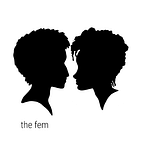Vanesa Pacheco on “Mothership: Tales of Afrofuturism and Beyond” edited by Bill Campbell and Edward Austin Hall
“We can also assume that it’s dead because a melanin-devouring plague (Schuylerosis?) either killed all people of color or that same plague killed all the melanin on the planet, leaving only a handful of affable sidekicks in its wake.” — Bill Campbell, editor of Mothership: Tales from Afrofuturism and Beyond
It’s not surprising that, to this day, depictions of the future (be it utopian or dystopian) continue to create worlds where people of color only exist as token splashes of diversity. The genre of science fiction and fantasy has the power to construct a world where artificial intelligence takes over Earth, magical serums save humans from zombies, or life as we know it now happens in space. Nevertheless, the majority of popular sci-fi/fantasy texts have only continued to perpetuate the social constructs of western society. We basically see white saviors or societies that show “everyone else” as lesser–and that isn’t too far off from how the world works now.
Mothership: Tales of Afrofuturism and Beyond, an anthology edited by Bill Campbell and Edward Austin Hall, does the opposite. In an effort to showcase work by various writers of different races and ethnicities, they have compiled post-apocalyptic and fantasy short stories where people of color are alive and present. These stories brought me into a world that include strong female and male protagonists that weren’t just white, as well as a future where humanity (despite our differences) works together.
One of the stories that stayed with me long after finishing the anthology was Thaddeus Howze’s “Bludgeon.” The story can be summed up as a comical tale about an alien invasionand baseball, but Howze does more than make us laugh. Stepping away from the dark side of sci-fi alien versus man (as we saw in District 9), Howze presents us with the dangers of assumption and a lesson in respect for all beings. Even though the aliens freeze humans who end up “disintegrated in a pink mist… from the contact with the plant’s venom,” we also enter an Earth that is realistic in its efforts to survive all through a national pastime.
Mothership’s authors also include Junot Diaz, whose story “Monstro” envisions a world where a plague (christened “La Negrura” or “The Darkness”) breaks out in Haiti. Diaz sheds light on the long-enduring feud between the Dominican Republic and Haiti through the eyes of his narrator, a Dominican student at Brown who has returned to care for his sick mother. Despite the concerns of a plague that was “a black mold-fungus-blast that came on like a splotch and then gradually started taking you over, tunneling right through you,” his narrator parties on because the dangers are far enough away to be the least of his worries. Diaz gives us money, wealth, sex, and a scary disease to show us a glimpse of how the western world lives in comfort away from the destructing real-world.
Although these are only two of the many stories in Mothership, they gave me a starting point where I could see myself in the future taking on aliens, weird artist machines, or shape-shifting humans. I was represented, even if not explicitly stated, because the genre of sci-fi and fantasy is open to everything. This genre allows people of color to be a part of the world where they can have power and be center-stage instead of always singled out to overcome obstacles of our social constructs.
Mothership is a step towards giving a voice to writers who are not always represented and to stories that challenge the white-wash of characters and setting.
